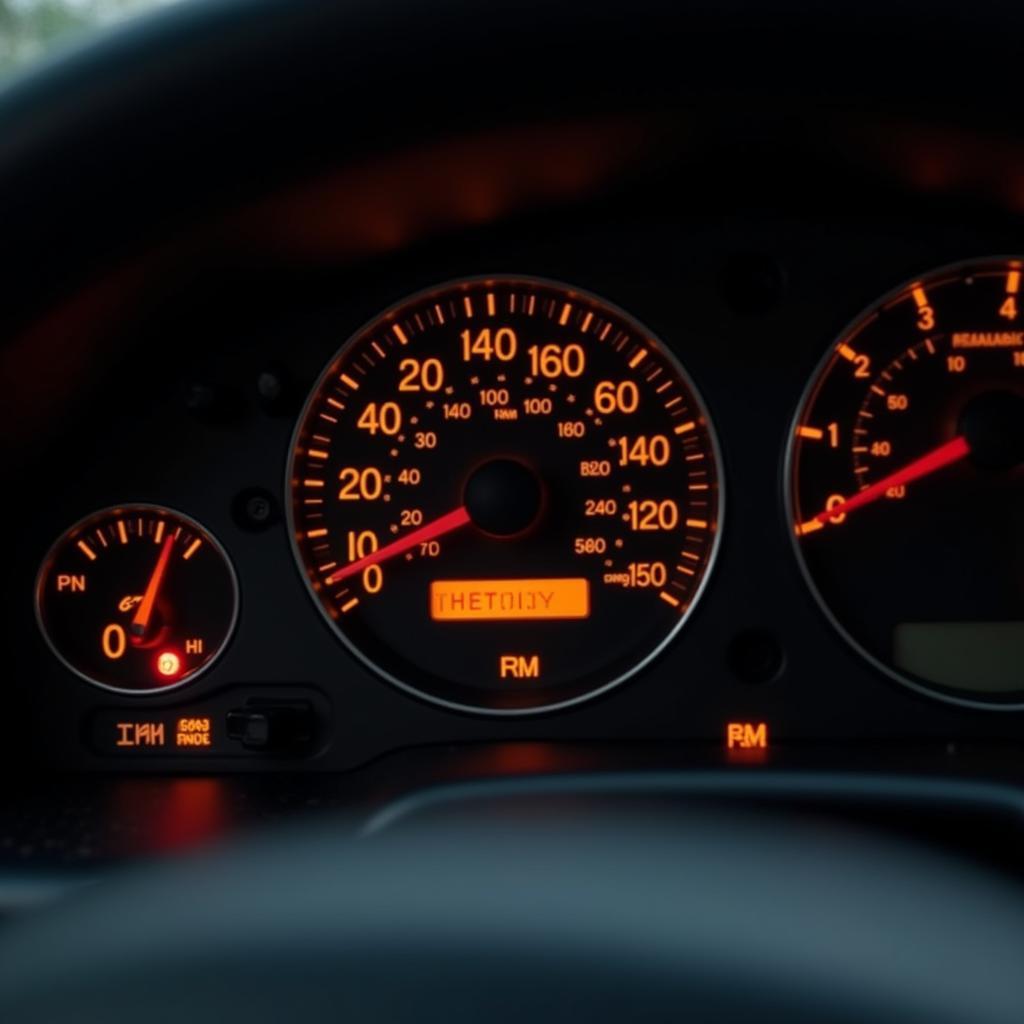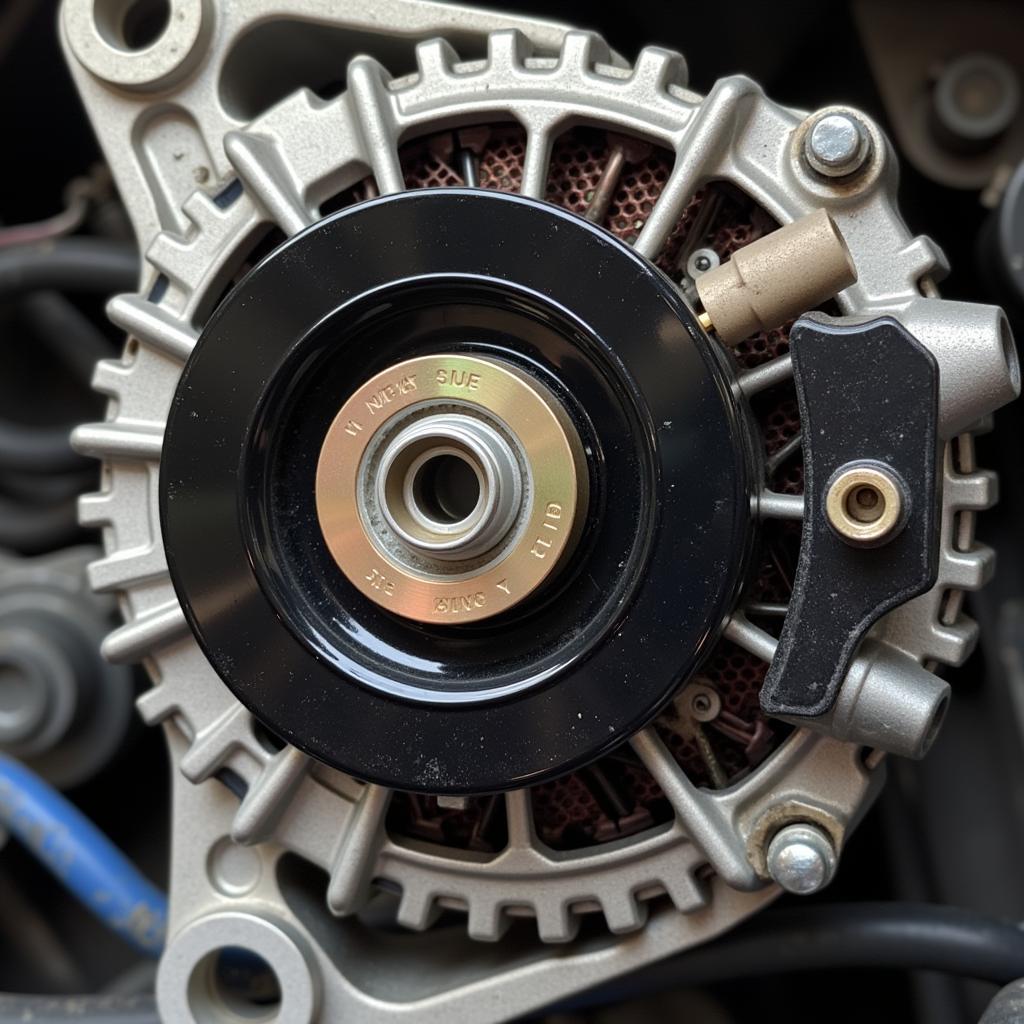That pesky yellow brake warning light on your E46 BMW can be a real head-scratcher. It can mean anything from low brake fluid to a more serious issue with your ABS system. This guide will walk you through the common causes, diagnostic steps, and solutions for that illuminated yellow brake light, empowering you to take control and get your Bimmer back on the road.
 E46 Yellow Brake Light on Dashboard
E46 Yellow Brake Light on Dashboard
Decoding the Yellow Brake Light: What’s It Trying to Tell You?
Unlike the red brake warning light, which signals a critical braking system failure, the yellow light usually indicates a less immediate but still important issue. It’s often related to the Anti-lock Braking System (ABS) or the brake fluid level. Ignoring it can lead to more serious problems and costly repairs down the line. So, let’s dive into the common culprits.
Common Causes of the E46 Yellow Brake Warning Light
The yellow brake warning light can be triggered by a variety of issues. Here are some of the most common:
- Low Brake Fluid: This is the most frequent cause. A leak in the brake lines, worn brake pads, or a faulty brake master cylinder can cause the fluid level to drop, triggering the warning light.
- Faulty ABS Wheel Speed Sensor: These sensors monitor the speed of each wheel and relay that information to the ABS control module. A malfunctioning sensor can confuse the system and activate the warning light.
- ABS Module Issues: The ABS module is the brains of the anti-lock braking system. If it fails, the entire system can be compromised, resulting in the yellow light.
- Worn Brake Pads: While not always directly linked to the yellow light, worn brake pads can indirectly cause it if they contribute to low brake fluid levels.
- Parking Brake Engaged: Sometimes, the simplest explanation is the correct one. Make sure your parking brake isn’t partially engaged.
If you have a new battery and it’s new battery drained overnight, this could also be related to a power drain on car battery, but it’s less likely to directly cause the yellow brake light.
Diagnosing the Problem: A Step-by-Step Guide
- Check the Brake Fluid Level: Open the hood and locate the brake fluid reservoir. Check if the fluid level is between the minimum and maximum markers. If it’s low, top it off with the correct brake fluid type.
- Inspect for Leaks: Carefully examine the brake lines, calipers, and master cylinder for any signs of leakage. Look for wet spots or fluid dripping onto the ground.
- Check the Parking Brake: Ensure the parking brake is fully released. Sometimes a slightly engaged parking brake can trigger the warning light.
- Scan for Fault Codes: If the brake fluid level is fine and the parking brake is disengaged, the next step is to use a diagnostic scanner to retrieve any stored fault codes related to the ABS system. This can pinpoint the specific component causing the issue.
“Regular maintenance, including checking your brake fluid and inspecting your brake system, can prevent many of these issues from occurring in the first place,” advises John Miller, a seasoned automotive technician with over 20 years of experience.
Solutions and Repairs
The specific repair will depend on the diagnosed cause. Here are some common solutions:
- Add Brake Fluid: If the fluid level is low, top it off with the correct brake fluid type and check for leaks.
- Replace Worn Brake Pads: If your brake pads are worn, replacing them can resolve the issue, especially if they are contributing to low brake fluid.
- Repair or Replace Leaky Components: If you find a leak in the brake lines, calipers, or master cylinder, these components may need to be repaired or replaced.
- Replace Faulty ABS Wheel Speed Sensor: A faulty wheel speed sensor needs to be replaced. This is a relatively straightforward repair.
- Repair or Replace ABS Module: A malfunctioning ABS module is a more complex issue and may require professional repair or replacement.
If you’re experiencing a parasitic power draw or your car wont start with good battery, these are separate issues that should be addressed independently. A power inverter drain car battery can also contribute to battery drain, but is unlikely the cause of the yellow brake light.
Conclusion: Keeping Your E46’s Brakes in Top Shape
The e46 yellow brake warning light shouldn’t be ignored. By understanding its potential causes and following the diagnostic steps outlined above, you can address the issue promptly and avoid more serious problems down the road. Remember, regular maintenance is key to preventing brake issues and ensuring your E46 remains safe and reliable. “Addressing brake issues early can save you money and headaches in the long run,” adds Miller.
“A well-maintained braking system is essential for your safety and the longevity of your vehicle.” – Sarah Johnson, Automotive Engineer.


